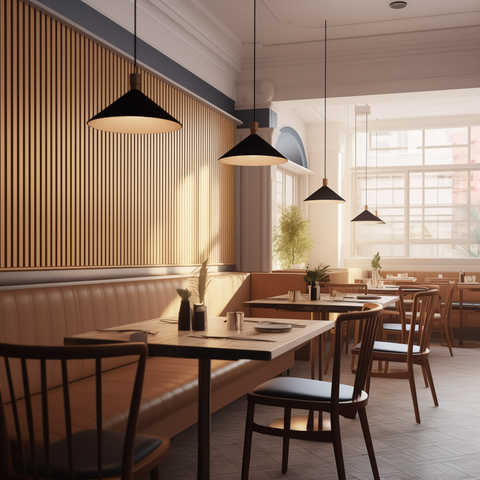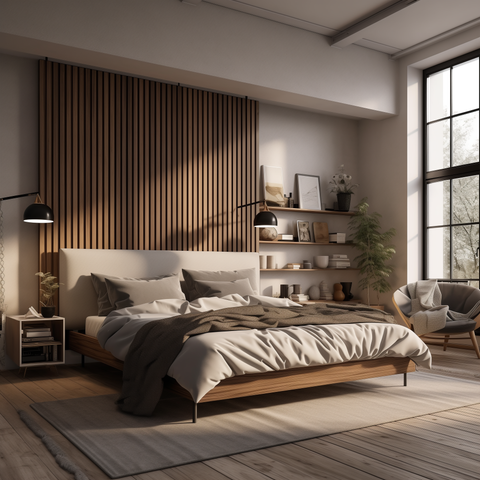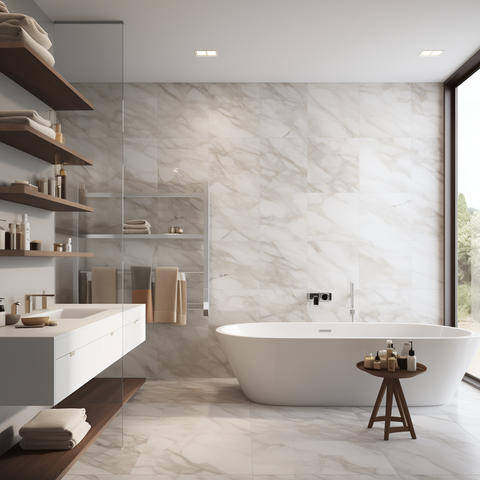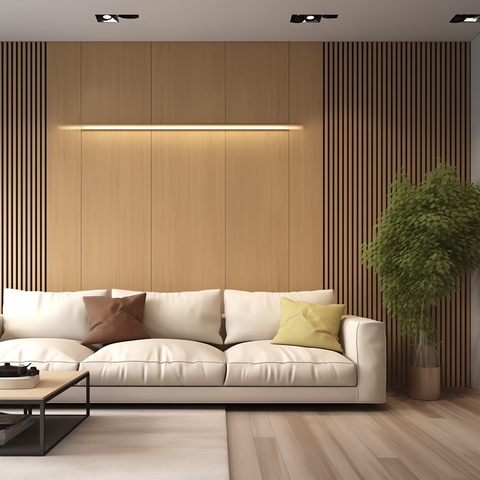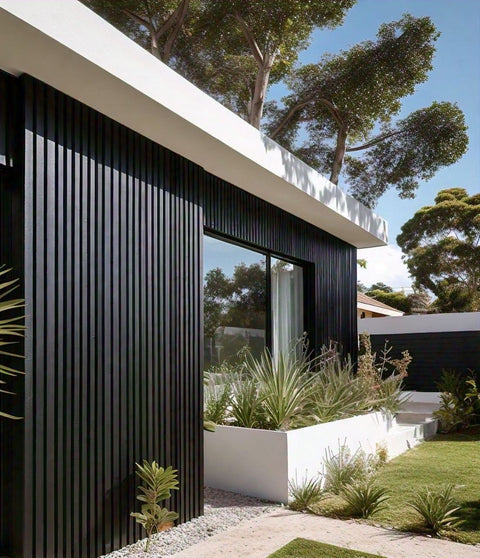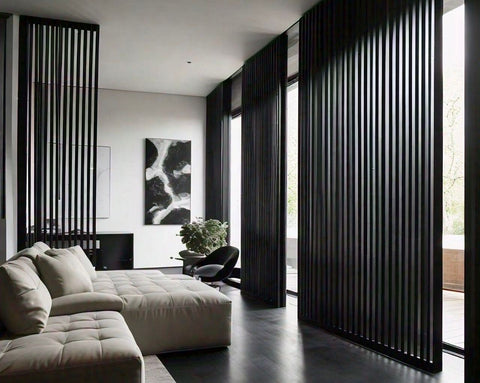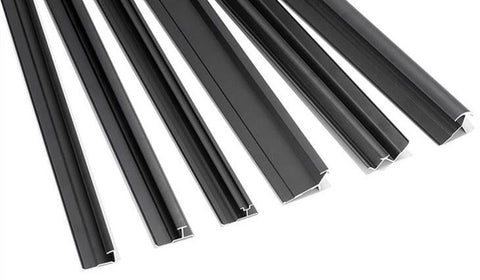Wood slat walls are everywhere these days, adorning living rooms, bedrooms, and even kitchens. But are they just a fleeting trend, or a design element with staying power? Let's delve into the history of slatted wood, explore what makes a long-lasting slat wall, and help you decide if it's the right choice for your home.
A Timeless Tradition: Wood Slats Throughout History
Slatted wood isn't exactly new. It's been a design staple for centuries, particularly in Japanese architecture. Think serene rooms with clean lines, where wooden slats are used on screens and facades to bring nature indoors while maintaining a minimalist aesthetic.
Fast forward to the mid-20th century, and we see legendary architects like Alvar Aalto and A. Quincy Jones incorporating slatted wood ceilings and walls into their iconic designs. These examples showcase how wood slats can add texture, warmth, and a touch of mid-century modern flair to a space.
So, Will Wood Slats Become Outdated? 3 Key Considerations
Ultimately, the decision of whether to embrace the wood slat trend is yours. But here are 3 factors to consider for a project that will age gracefully:
- Material Matters: Real Wood vs. Faux Options
Genuine wood is the clear winner here. It boasts a natural beauty, durability, and the ability to develop a richer patina over time. Plus, it feels authentic.
Faux wood alternatives like melamine or contact paper might seem like a budget-friendly option, but their artificial look will likely feel dated sooner rather than later. Invest in real wood or wood veneers for a timeless result.
- Context is King: Does it Fit Your Home's Style?
Wood slat walls can be incredibly versatile, but it's important to consider your home's overall style. They might seamlessly blend with a mid-century modern home or a Scandinavian-inspired space, but might clash with the ornate details of a Victorian home. Choose slat walls that complement your existing architecture for a cohesive look.
- Strike a Balance: Don't Go Overboard
Wood slat walls are a statement piece, so a little goes a long way. Too much can overwhelm a space. Use them strategically as an accent wall or to define an area, ensuring they integrate harmoniously with the rest of the room's design.
The Final Verdict: Timeless Beauty with Thoughtful Design
Wood slat walls, when used thoughtfully and with high-quality materials, have the potential to become a permanent design feature in your home. Their historical significance, versatility, and ability to add warmth and texture make them a compelling choice. So, embrace the slat trend – just make sure it's done right!
Wood Slat Accent Walls: Trendy or Timeless? A Deep Dive
Wood slat walls have become a ubiquitous sight in contemporary design, gracing everything from living rooms to restaurants. But with any design trend, the question of longevity arises. Will wood slat walls stand the test of time, or will they be seen as dated relics in the near future?
This blog post dives deeper than just a yes or no answer. We'll explore the history of slatted wood, the impact of materials used, the importance of context, and the significance of tasteful implementation. With these factors in mind, you can decide for yourself whether wood slat walls are a fleeting fad or an enduring design staple.
A Rich History: Wood Slats Through the Ages
To truly appreciate wood slat walls, we must delve into their rich historical context. These design elements aren't some recent invention – they've graced architecture and interior spaces for centuries.
Japanese Design: Embracing Simplicity and Nature
Traditional Japanese design, renowned for its emphasis on natural materials and clean lines, has long embraced the beauty and versatility of wooden slats. From interior wood slat screens (shoji) to exterior slatted wood facades (engawa), Japanese architecture seamlessly integrates slatted wood for centuries. Why? Because Japanese design prioritizes simplicity and minimalism. It focuses on removing unnecessary elements to achieve a sense of clarity and tranquility. Think clean lines, uncluttered spaces, and a visual balance. Ornate wood and millwork, often found in traditional or transitional styles, adds unnecessary detail. By using wood slats in a clean, linear fashion, Japanese designs bring nature into the home while maintaining a minimalist aesthetic.
Mid-Century Modern Embrace: Slatted Wood Takes Center Stage
The mid-century modern era witnessed the integration of vertical wood slats in renowned architectural homes, further cementing their status as design classics.
-
Alvar Aalto and the Villa Mairea: Widely regarded as the greatest Finnish architect of all time, Alvar Aalto incorporated slatted wood into the Villa Mairea project in 1938. He used a unique slatted ceiling panel to add texture and depth to the home.
-
A. Quincy Jones and the Smalley House: Over in America, legendary architect A. Quincy Jones put slatted wood front-and-center when designing the Smalley House in 1973. Combined with tall windows and well-placed houseplants, the entire project brought nature into the home in a seamless and stylish way.
These examples highlight how, despite a recent surge in popularity, slatted wood walls have been a part of the interior design zeitgeist for hundreds of years.
Will Wood Slat Walls Become Outdated? 3 Considerations Before You Commit
So, we've established that slatted wood has a rich history, but how do you know if it will continue to be popular? Or how will a wood slat accent wall look in a few years?
Ultimately, the decision of whether to incorporate slatted wood into your home is yours. However, like any design project, you want to ensure you'll still love it down the road. Here are 3 important factors that will influence how well your slatted wood project ages:
- Material Matters: Real Wood vs. Faux Options
One crucial aspect influencing the longevity of wood slat walls is the choice of materials. Genuine, high-quality wood possesses an inherent durability that stands the test of time. It exudes a natural warmth and authenticity that resonates with homeowners and occupants. Additionally, it ages gracefully (especially when finished or prefinished). You can look forward to the wood's color and texture becoming richer with time.
Conversely, faux materials like contact paper, melamine, or laminate can almost guarantee your project will look dated before it's finished. While they may be cheaper than real wooden wall panels, the inauthentic texture and sheen of fake materials will quickly render these products tacky. Like most things in the design world, authenticity triumphs over artificiality.
Here's a breakdown of material options:
- Solid Wood Slatted Millwork: This is the most durable and timeless option, but it will also cost you the most (typically $30-80 per sqft).
- Prefinished Wood Slat Wall Panels: These are made using genuine wood veneers (a real slice of wood adhered to a solid backing), offering an authentic wood finish at a more budget-friendly price point.
- Contextual Considerations: Does it Fit the Style of Your Home?
A key determinant of the timelessness of wood slat walls lies in their suitability to the surrounding design context. While they seamlessly integrate into certain styles, such as homes built in the 60s or inspired by traditional Scandinavian design, their compatibility with other architectural genres might be questionable.
For instance, incorporating wood slat walls into a Victorian home may clash with the existing design elements, potentially diluting the overall aesthetic. Therefore, the success of wood slat walls lies in their ability to complement and enhance the architectural style and era of the space, ensuring their continued relevance.
3. Tasteful Implementation: Don't Overdo It
The manner in which wood slat walls are incorporated into a design plays a pivotal role in their endurance. Overdoing any design feature can lead to saturation and diminishing appeal. Wood slat walls are no exception. When applied tastefully and judiciously, they elevate the aesthetic and create a focal point within a space.
However, excessive use can overwhelm both the inhabitants and visitors, leading to a decline in appreciation. The key lies in striking a balance, ensuring wood slat walls are utilized thoughtfully and in harmony with the overall design scheme. By doing so, their appeal will withstand the test of time.
Conclusion: Wood Slat Walls - A Design Element with Staying Power
Wood slat walls have captivated the design world with their unique charm, but the question remains: Are they trendy or timeless? Drawing upon their historical significance, the choice of materials, contextual compatibility, and tasteful implementation, we can confidently assert that wood slat walls have the potential for enduring appeal.
When embraced as a design element rooted in tradition and craftsmanship, employing authentic wood materials, and integrated thoughtfully into the surrounding environment, wood slat walls will continue to delight homeowners and resonate with generations to come.
Ready to Embrace Wood Slat Walls?
If you've decided wood slat walls are the right choice for your home, here are some resources to get you started:
- Choosing the Right Material: Explore the different types of wood, finishes, and slat widths to find the perfect match for your style and budget.
- Finding Inspiration: Browse online galleries and design magazines for stunning examples of wood slat wall implementations.
- Considering DIY vs. Professional Installation: Decide if this is a project you can tackle yourself, or if hiring a professional is the best route.
With careful planning and execution, wood slat walls can transform your space into a timeless and stylish haven.


